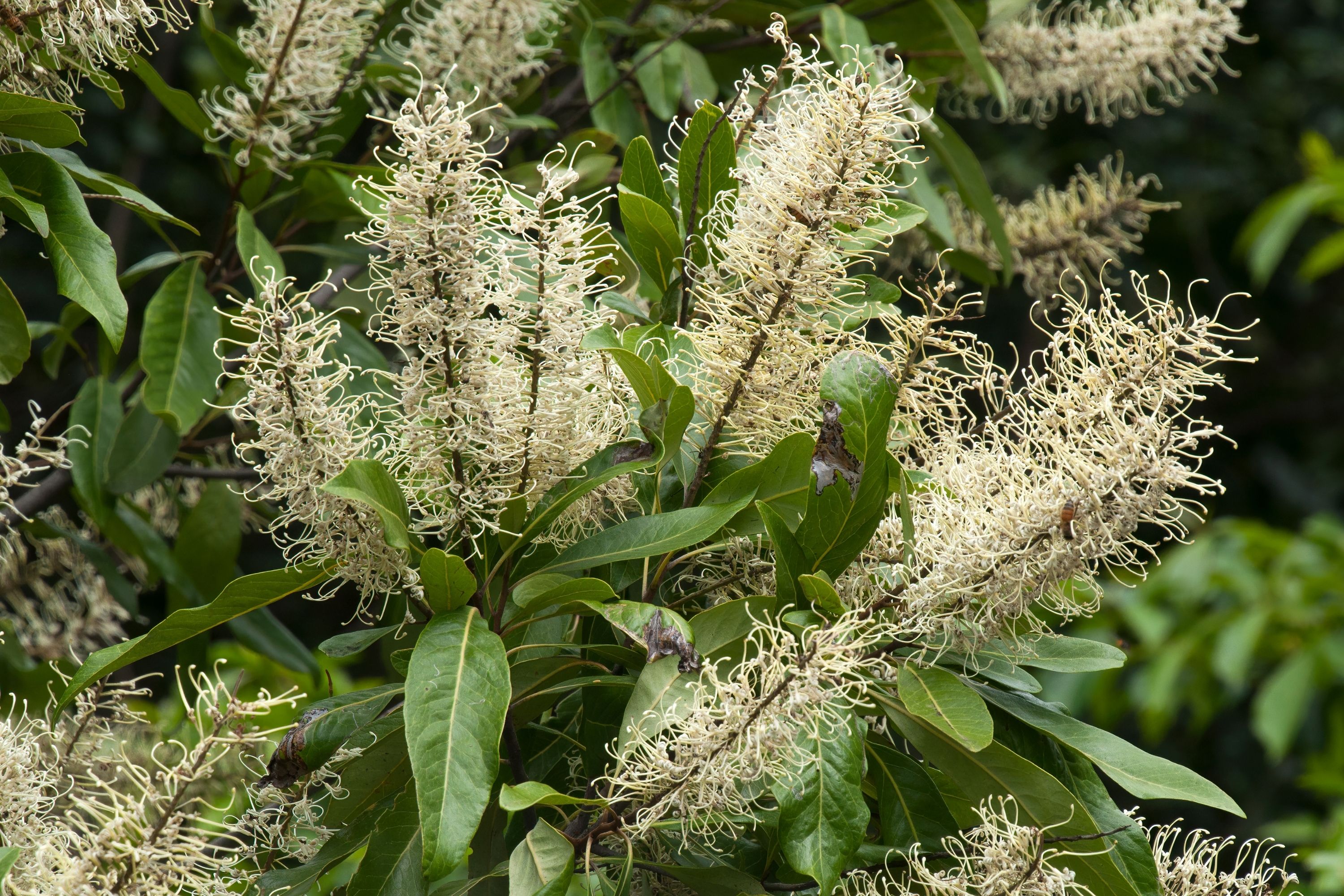The ivory curl
(Buckinghamia celsissima)

Description
Buckinghamia celsissima, commonly known as the ivory curl, is a species of trees, constituting part of the plant family Proteaceae. They are endemic to the wet tropics rainforests areas of northeastern Queensland, Australia. The species was described in 1868 by Ferdinand von Mueller in honour of Richard Grenville, 3rd Duke of Buckingham, from a collection of material made by John Dallachy near Rockingham Bay on 11 January 1865. Its specific epithet is Latin for "very tall". Common names include ivory curl flower and spotted silky oak. Buckinghamia celsissima reaches 30 m (98 ft) tall in its natural rainforest habitat, but is much smaller, reaching 10 m (33 ft) tall, in Australian east coast gardens. Glossy dark green above and whitish below, the leaves are quite variable. Juvenile leaves have one or more lobes while adult leaves are simple and entire, measuring 8 to 16 cm (3.1 to 6.3 in) long by 3–7 cm (1.2–2.8 in) wide. The white flower spikes appear over summer and autumn. Terminal and showy, these are drooping racemes up to 20 cm (7.9 in) in length. Flowers are followed by the development of woody follicles, 1.5–3 cm (0.59–1.18 in) long. In the wild they are found more frequently in drier rainforest from altitudes of 200 to 1,000 m (660 to 3,280 ft) above sea level. They often grow with kauri pine (Agathis robusta). The species is grown widely in Brisbane and thrives in Sydney and Melbourne, yet is shy to flower in Cairns. Frosts render it difficult to grow in Canberra. It can be propagated from seeds or cuttings of hardened new growth. Its flowerheads attract birds and insects.
Taxonomic tree:







